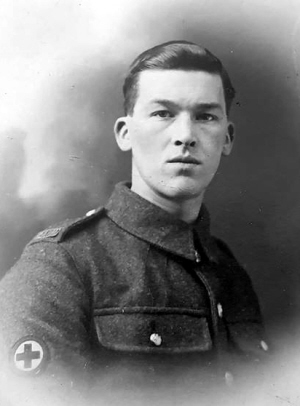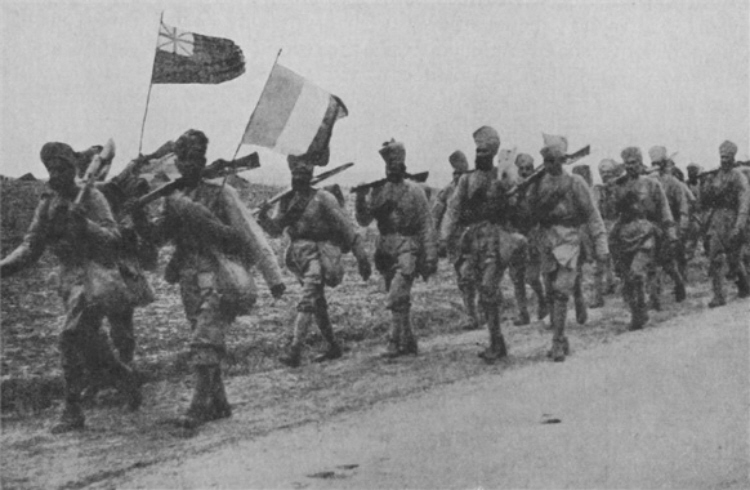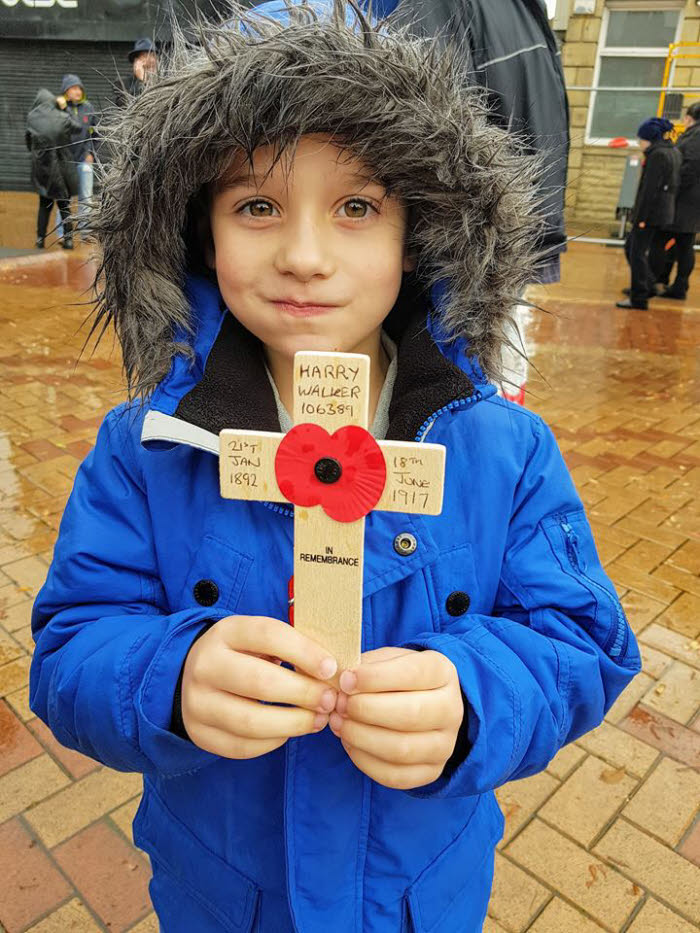
106389, Royal Army Medical Corps, 111th Combined Field Ambulance
Harry Walker was born in Horbury on the 21st January 1892, the second child and second son of Horbury butcher Ben Walker and his wife, Emily (nee Sims), who married at Batley St Thomas Church on the 12th July 1890. The couple had eight children from their marriage, but sadly one child had died before April 1911. Ben Walker was born in Ossett, and his wife Emily and their children were all born in Horbury.
In 1901 Ben and Emily Walker with their six children, including Harry, all under the age of 11 years, were living on Horbury High Street where Ben worked on his own account as a butcher and shopkeeper. Little had changed by 1911, except the arrival of a second daughter. Ben Walker was now shown as a beef butcher. Harry Walker was aged 19 and a joiner’s apprentice.
Harry Walker married Lilly Binks in the Wakefield area in late 1912 and they had three children from their marriage. Mary Lucas Walker was born on the 22nd January 1913. Arnold Walker was born in Summer 1915 and Irene Walker was born on 16th June 1916. Both these latter births were registered in Dewsbury district, suggesting that Harry and Lilly Walker had moved to live at Ossett by Summer 1915 but by 1917 Lily was living at 5, Chapel Street, South Parade. Sadly it appears that Arnold Walker, aged one year died in Summer 1916 and Harry’s daughter, Irene died in 1923 aged just six years.
Harry Walker’s army service record has not survived, but it is known that he enlisted at Dewsbury, and joined the Royal Army Medical Corps with the rank of Private and a service number 106389. Private Harry Walker died in Mesopotamia (Iraq) on the 18th June 1917. His gravestone carries the following inscription: “In Memory of 106389 Pte H. Walker, RAMC, 111 CFA, Accidentally drowned 18/06/17”. It is not yet clear how Harry Walker drowned, except that it was accidental and on active service, but Baghdad has many canals, which are used for irrigation.
The 111th Combined Field Ambulance, Royal Army Medical Corps was attached to the 3rd (Lahore) Indian Division, which was a regular division in 1914 under the command of Northern Army in India. It was mobilised on the 8th August 1914 and began departing India on the 24th August for Egypt (9th Sirhind Brigade) and France (bulk of the division). The 9th Sirhind Brigade joined the division in France by 30th November. The division served in France until starting to entrain on the 8th December 1915 for Mesopotamia. They remained in Mesopotamia until March 1918, then transferred to Egypt and served through to the end of the war in Palestine. The Division’s last action of note were the Battles of Megiddo, 18th – 20th September 1918.

Above: Indian troops of the 3rd (Lahore) Indian Division in France in 1914.
Private Harry Walker, aged 25 years, died on the 18th June 1917, just one year and 2 days after his daughter’s first birthday. He is buried at grave reference V.E.2 at the Baghdad (North Gate) War Cemetery, 1 Iraq. Baghdad (North Gate) War Cemetery is located in a very sensitive area in the Waziriah Area of the Al-Russafa district of Baghdad. The main entrance to the cemetery is located opposite the College of Arts and the Institute of Administration in Baghdad University and adjacent to the Iraqi Cigarette Factory in Waziriah Area and the Press of Ministry of Defence.

Above: Harry Walker’s Great, Great Grandson Ronnie George Halliday, aged 5 years, at Remembrance Day, Ossett, November 11th 2018.
In 1914, Baghdad was the headquarters of the Turkish Army in Mesopotamia. It was the ultimate objective of the Indian Expeditionary Force ‘D’ and the goal of the force besieged and captured at Kut in 1916. The city finally fell in March 1917, but the position was not fully consolidated until the end of April. Nevertheless, it had by that time become the Expeditionary Force’s advanced base, with two stationary hospitals and three casualty clearing stations.
The North Gate Cemetery was begun In April 1917 and has been greatly enlarged since the end of the First World War by graves brought in from other burial grounds in Baghdad and northern Iraq, and from battlefields and cemeteries in Anatolia where Commonwealth prisoners of war were buried by the Turks.
At present, 4,160 Commonwealth casualties of the First World War are commemorated by name in the cemetery, many of them on special memorials. Unidentified burials from this period number 2,729.
References: